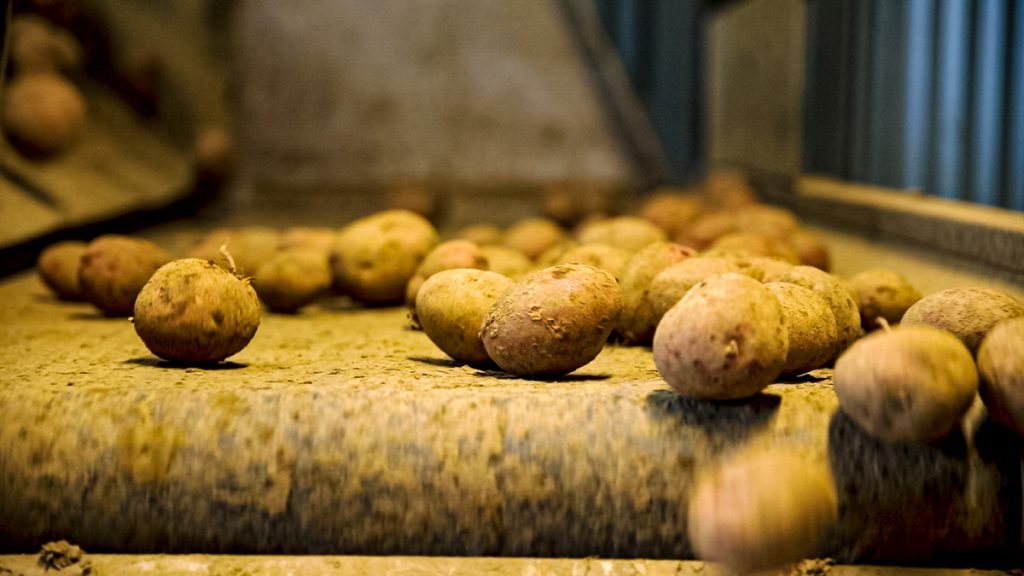The main crop potato harvest in Northern Ireland is now well underway. Initial indications are pointing to a significant drop in yields this year, relative to 2021.
However, potatoes dry matters are exceptionally high – in some cases up to 25%. This is a direct consequence of the very dry weather that was a feature of the summer and early autumn period.
While high dry matters act to enhance eating quality, they also predispose tubers to bruising.
Reflecting on these developments, a College of Agriculture, Food and Rural Enterprise (CAFRE) spokesperson commented:
“During potato harvest, monitor tubers for damage which frequently occurs at drops from harvesters into boxes or trailers. Bruising is often the result of insufficient soil on the web or excess agitation.
“Exposed sharp edges or an incorrect share setup can cause slicing and bruising.
“Oversized tractor tyres running in the drill bottom or stacking overfilled boxes are two of the most common causes of crushing.
“Excessive damage leads to increased problems in store and eventual down-grading of produce, so identify problems early to minimise losses,” the spokesperson added.
Growers are advised to take samples of the harvested crop, either daily or when entering a new field, wash and inspect for damage.
Hot boxing gives a quicker indication if damage has occurred, according to CAFRE.
“Everyone involved in harvesting should be made aware of the importance of damage and bruise prevention,” the spokesperson continued,.
“On most occasions, they are in the best position to identify problems and do something about them.”
Other crop management for potato harvest
Drying and curing potatoes are other crop management priorities which growers should take full account of at harvest.
Research has confirmed that drying potatoes quickly post-harvesting prevents the development of skin blemish diseases and soft rots.

Moreover, drying within 48 hours using positive ventilation systems significantly reduces the development of diseases such as silver scurf.
The curing period immediately following harvest is one of the most important storage phases. Wound healing occurs most rapidly at high temperatures and high humidity.
Maintaining the crop at 12-15° centigrade and 85% relative humidity for a period of about two weeks, often referred to as ‘dry curing’, allows wound healing to take place, whilst minimising the risk of disease development.
Ventilating potato stores on dry afternoons during the curing period will normally provide adequate conditions. Growers should pay particular attention to potatoes from fields where blight and soft rots are an issue at harvest.
Drying and curing before grading or longer-term storage is especially important in these circumstances to minimise the spread of rots through the stored crop.

